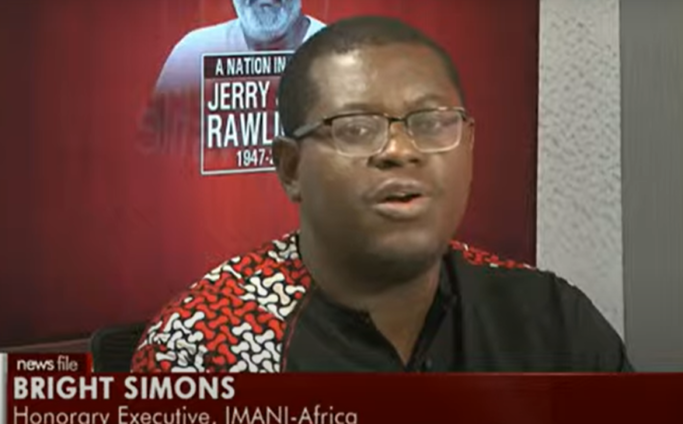Honorary Vice President of IMANI-Africa, Bright Simons, says the Lands and Natural Resources Minister, Samuel Abu Jinapor’s claim that the royalty rate agreed in the lithium deal is the highest in the country’s history is false.
He explained that Ghana has enjoyed significantly higher rates in the past and thus one could argue that the current lithium royalty rate is shortchanging Ghana.
The royalty rate in the lithium deal has been increased to 10% from the standard five percent, and the state’s free carried interest in the mining operation has been increased from 10% to 13%.
However, reacting to this, Bright Simons noted that the terms for the contract are not generous enough.
“Yes, the 10% seems high because in recent times we’ve been signing agreements that some argue have shortchanged us and the 13% free-carry interest is interesting. But the truth of the matter is that if you take the whole historic span of our mining industry in this country, those terms are not that generous because we can say that in the 70s Ghana automatically had a 55% participation rate.
“You couldn’t do mining in Ghana unless the state owns 55%. So are we comparing our current fiscal yield on lithium to that era? Or we’re having an arbitrary period of say from 1990? What are we doing? So in short, there have been periods in our country where there have been way more,” he said.
He added that “Whether or not that was a good thing is another debate because the argument was that by the 1980s we declined from 33 gold mines to about four gold mines because some argued that the state was too dominant and private investment was not coming in, so private technology, private management capacity etc had been shut out.
“But to argue that this is the best in terms of generosity of the terms is just not true because we have the history in this country where in the 70s Acheampong government said 55 percent of all minerals belong to the state. How is your 13% or even if you increase it to 19% or even if you go further to 29% as the minister is saying might be the case, how does that compare?”
He also noted that Ghana’s fixed royalty structure was not the best option.
Explaining his argument on JoyNews’ Newsfile on Saturday, he said the government ought to have gone with a variation in the royalty rate.
“What it means is that how much we get from the outset, so basically a royalty is something where regardless of whether the company who is doing the mining gets profit or not they pay you an amount. And that royalty we decided in those days that the smartest thing to do was to look at the operating margin of the company, how much the company is making in profit and then peg it to that.
“So when the price of the mineral goes up dramatically on the world market, their operating margin will automatically improve all things being equal, then we can adjust our royalty rate. So if you look at that adjustment model, there were times we could get as much as 25% rate on paper,” he said.
Latest Stories
-
Faith-based institutions are instrumental in national development – Bawumia
3 mins -
Upholding the Integrity of Presidential Promises: A call to Ghanaian leaders
11 mins -
I don’t start ‘beefs’; I only reply – Strongman refutes claims
14 mins -
Vice President Bawumia promises reforms to turn Ghana’s fortunes around
22 mins -
REGSEC warns encroachers along Tema-Sakumono Ramsar site as it races to prevent flooding
30 mins -
Kumasi International Airport to be commissioned ahead of time – Transport Ministry
37 mins -
Vomit your loot now or hold onto it and face the consequences – Asiedu Nketiah to Akufo-Addo, NPP
47 mins -
Democracy is going to reverse in West Africa if we don’t tackle economic hardships – Atuguba
1 hour -
Bawumia commissions 124 housing units for victims of Appiatse disaster
2 hours -
Stonebwoy’s The Livingstone Foundation surprises talented autistic boy with gifts
2 hours -
NPP should’ve referred Kingsley Nyarko’s bribery allegation to the police – Inusah Fuseini
2 hours -
Police pursue gunmen for killing 2 off-duty officers at Trasacco
3 hours -
Bayer Leverkusen beat Roma to win semifinal first leg
3 hours -
Aston Villa face tough task after 2-4 defeat to Olympiacos
3 hours -
NGO empowers women and girls with disabilities
3 hours

